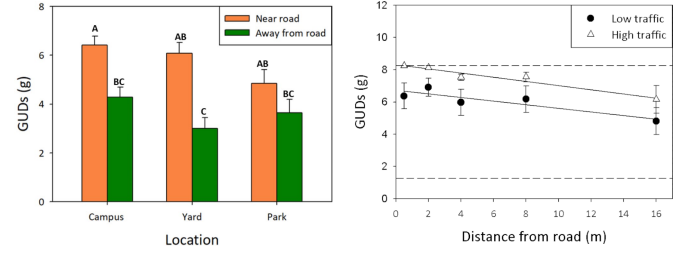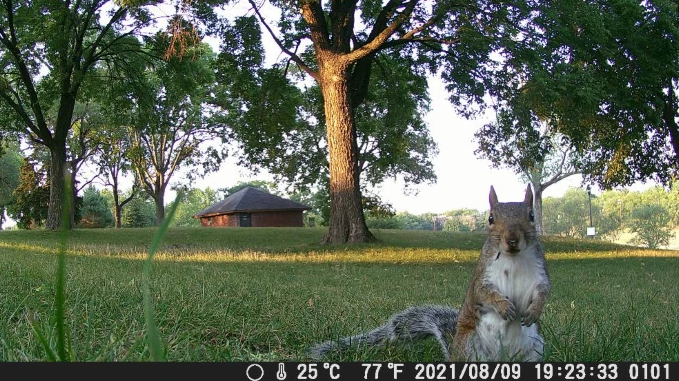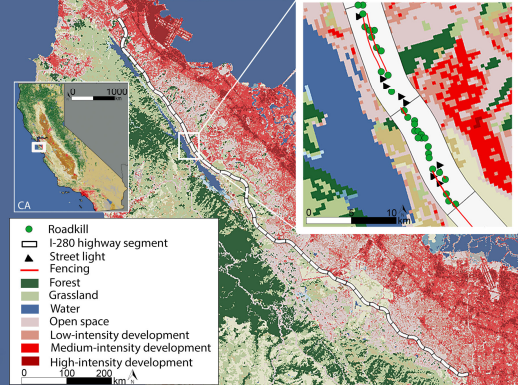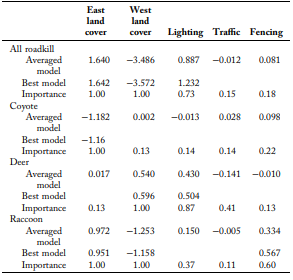Fardell, L.L.; Pavey, C.R.; Dickman, C.R. Backyard Biomes: Is Anyone There? Improving Public Awareness of Urban Wildlife Activity. Diversity 2022, 14, 263. https://doi.org/10.3390/d14040263
With urbanization increasing, wildlife are increasingly being found in peoples yards and are relying on resources found in these yards. This also exposes wildlife to the effects of yard management, human activities, and impacts from peoples pets. Many people do not realize that their yards act as refuges for many species. This research aimed to provide a background knowledge to citizens about the importance of biodiversity within their lawns and educate them about the species found in their local area.
This study was conducted in two medium-low density urban areas located in Australia. Both of these areas were located near the 534 ha Glenrock State Conservation Area and many green spaces were dispersed throughout the area. Many small native mammal species occupy this area. It was also noted that two introduced mesocanivore species could be found within the study site: the red fox (Vulpes vulpes) and the domestic cat (Felis catus).
They conducted Household Activity Surveys within the study site to get a better understanding of the yard structures and activites that took place at peoples homes. Yard structure questions focused on the types of plants and grasses that could be found within the yard. The survey also asked questions on whether the yard had fences, flower beds, pavement, etc. They also conducted Backyard Animal Activity Surveys between the months of May-June of 2019 to observe the amount of wildlife present in peoples backyards. To do this they attached camera traps to trees and fences in peoples backyards. Homes with pets that were allowed in the backyard were told to keep letting their pets out as usual.
Out of 50 homes that completed the survey, 41 of these had observed wildlife within their backyards. 24 of the respondents stated that they also had a pet. Every property had a fence, but they type of fence varied from metal to wooden. More than half of them homes used fertilizers or pesticides in the yards.
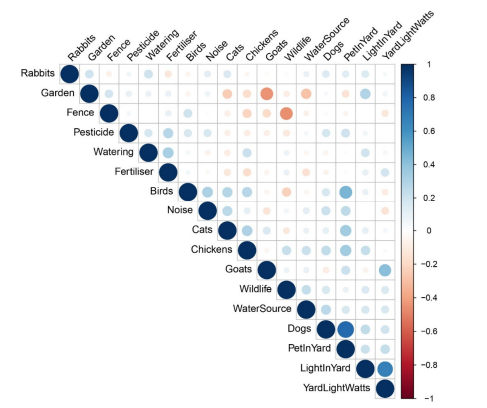
This graph shows the correlation between wildlife found in peoples backyards and the different variables associated with the data that homeowners selected they have in their yards.
The results from the Backyard Animal Activity Survey showed that most animals were present in peoples backyards at night rather than during the day. The most common species found during night were the common brushtail possum. northern brown bandicoot, and the red fox. Native birds and the domestic cat were frequently observed during the day in more vegetative habitats in comparison to open areas. Wildlife were found more frequently in backyards where the yard was more easily accessible, there was reduced pesticide use, increased levels of antrhopogenic noise, and increased yard access by pets.
I thought this article was interesting as it dives deeper into the way that the choices we make when maintaining our personal backyards can have a direct impact on the local wildlife. One thing I wish they talked more about was the impacts of pets in the backyard on the prescences of wildlife. They brought up having pets quite a bit and even in the results you could see that yards with pets tended to have a higher wildlife prescence. I think it would be interesting if they touched on that aspect more as many people who do have pets will let them outside or even keep them in their backyard. I also am interested in the impacts of pesticides and fertilizers in backyards and how that could have negative impacts on wildlife who use these backyards as corridors. I think this study was interesting and could be used a tool to educate people on the way their yards have direct impact on wildlife.
